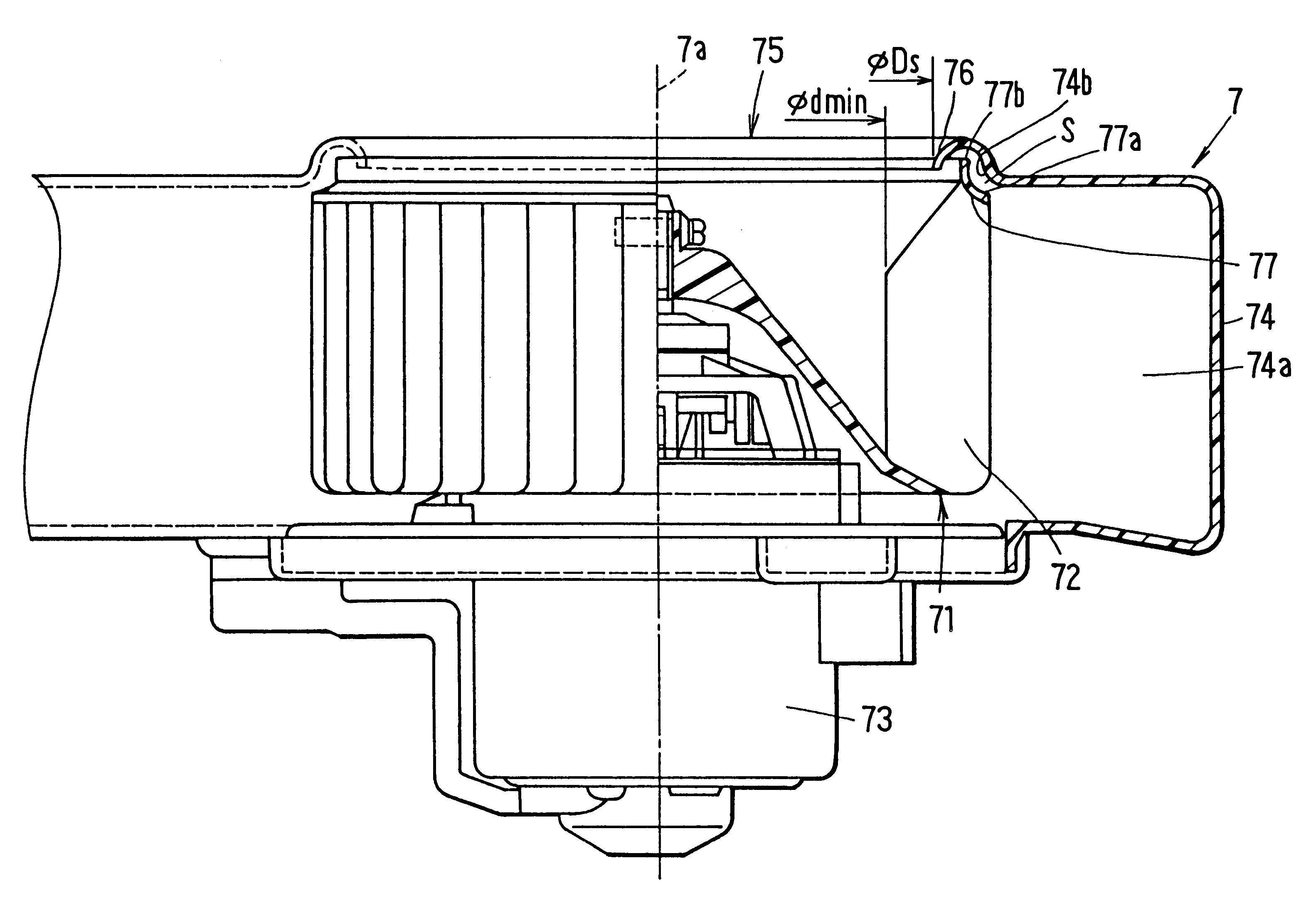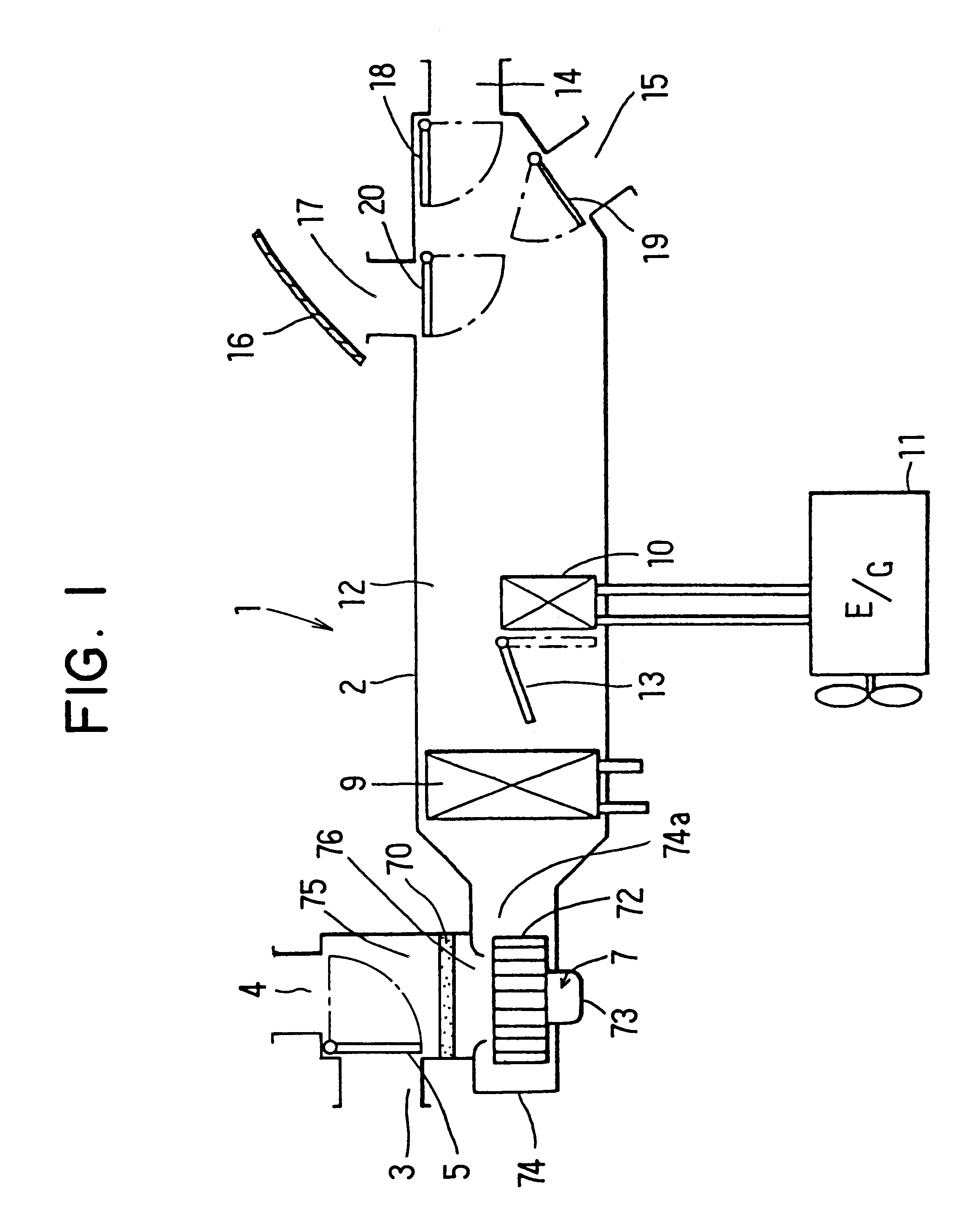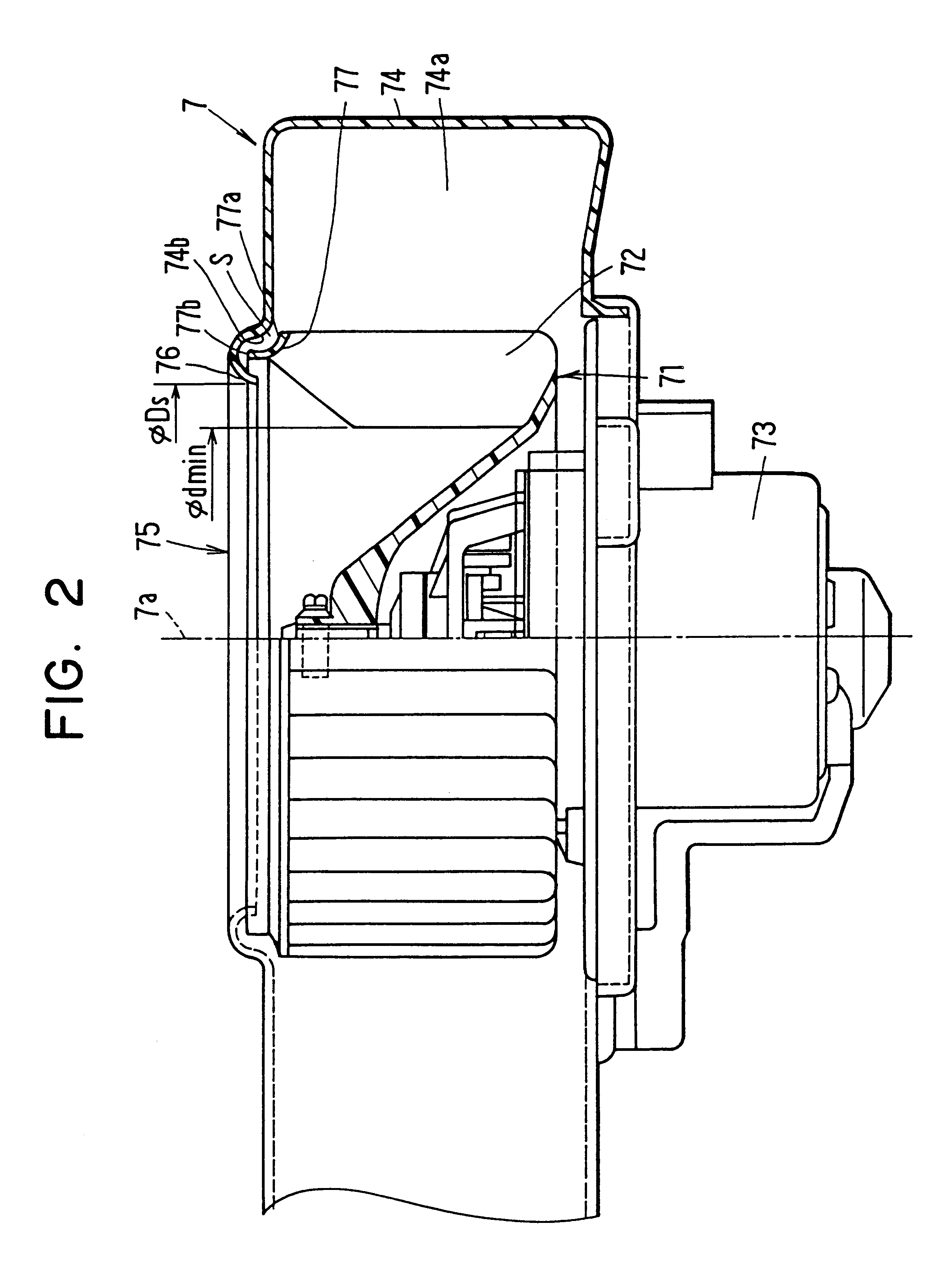Centrifugal type blower unit
a centrifugal type, blower technology, applied in the direction of liquid fuel engines, marine propulsion, vessel construction, etc., can solve the problems of interference between the sub-flow air and the main-flow air, the second noise cannot be sufficiently reduced, and the end side of the blade may generate unstable whirls
- Summary
- Abstract
- Description
- Claims
- Application Information
AI Technical Summary
Problems solved by technology
Method used
Image
Examples
first embodiment
In the first embodiment, as shown in FIG. 4, a shroud 77 is formed integrally with each of the blades 72 using resin. The shroud 77 has a shrouded surface 77a which is opposite to an inner wall 74b of the scroll casing 74 to have a clearance S between the inner wall 74b and the shrouded surface 77a. The shroud 77 is formed approximately into a circular arc shape in cross section along a flow line of main flow of air passing through between the blades 72, so that a sectional area of an air passage within the centrifugal fan 71 is reduced from a radius inner side toward a radius outer side by the shroud 77. That is, at the position where the shroud 77 is formed, a height of each blade 72 is gradually reduced toward the radius outside, as shown in FIG. 4.
Further, the shroud 77 has an extending portion 77b extending from each end of the blades 72 at the side of the air suction port 75 to the air suction side in the axial direction of the rotation axis 7a. The bell-mouth portion 76 exten...
third embodiment
FIG. 9 shows the relationship between the slanting angle .theta. of the slanting portion 72a of the blades 72 and the second noise level, and FIG. 10 shows the relationship between slanting angle .theta. of the slanting portion 72a and the low-frequency noise level. As shown in FIG. 9, when the slanting angle .theta. of the slanting portion 72a is increased to be larger than 30.degree., the second noise can be reduced. However, as shown in FIG. 10, the low-frequency noise is increased as the slanting angle .theta. increases. Thus, according to the present invention, the slanting angle .theta. is set in a range of 30.degree.-70.degree. (i.e., 30.degree..ltoreq..theta..ltoreq.70.degree. ), thereby reducing both of the second noise and the low-frequency noise.
fourth embodiment
A fourth preferred embodiment of the present invention will be now described FIGS. 11-16. In the present invention, the blower unit 7 is provided to reduce a low-frequency noise about 100-200 Hz while reducing consumption power.
In the fourth embodiment, the slanting portion 72a is formed in the blades 72 similarly to the first embodiment, and each of the blades 72 is formed in such a manner that curvature radius R1 from the inner radius end D1 of the centrifugal fan 71 to 1 / 4 L position is smaller than curvature radius R2 from the outer radius end D2 of the centrifugal fan to 3 / 4 L position. Here, "L" is a length subtracting an inner radius of the centrifugal fan 71 from an outer radius thereof. That is, the length L is the length of each blade 72 in the radius direction of the centrifugal fan 71.
In the centrifugal fan 71, the smaller a fan outlet angle .beta.2 is, the larger the resistance applied to the blades 72 is. Therefore, consumption power of the electrical motor 73 for driv...
PUM
 Login to View More
Login to View More Abstract
Description
Claims
Application Information
 Login to View More
Login to View More - R&D
- Intellectual Property
- Life Sciences
- Materials
- Tech Scout
- Unparalleled Data Quality
- Higher Quality Content
- 60% Fewer Hallucinations
Browse by: Latest US Patents, China's latest patents, Technical Efficacy Thesaurus, Application Domain, Technology Topic, Popular Technical Reports.
© 2025 PatSnap. All rights reserved.Legal|Privacy policy|Modern Slavery Act Transparency Statement|Sitemap|About US| Contact US: help@patsnap.com



